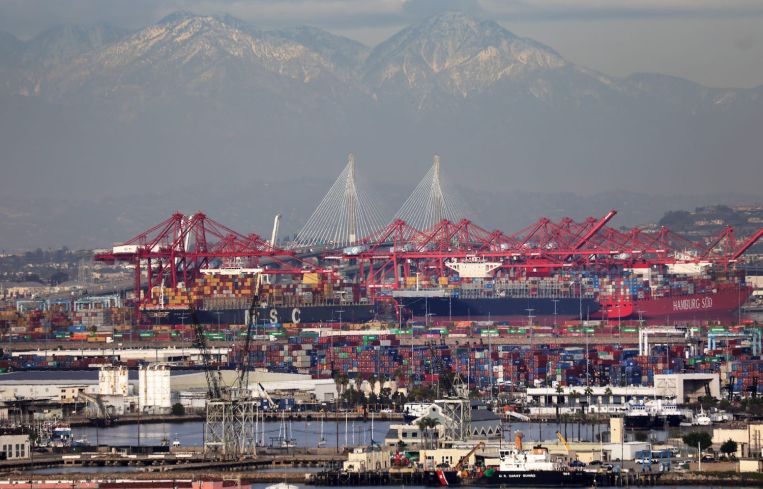US Supply Chain Snagged at Port of LA Over COVID Spending Surge
Backlogs are straining industries that commercial real estate depend on, including materials and goods needed for development
By Greg Cornfield February 25, 2021 3:30 pm
reprints
In February 2020, the first signs of economic trouble caused by COVID-19 were seen at the Port of Los Angeles and Port of Long Beach as inbound shipments dropped dramatically. One year later, it’s the opposite: too many shipments have caused an unprecedented bottleneck and put serious strain on the supply chain.
The twin ports are the two largest in the Western Hemisphere and, together, handle more than one-third of all containers coming into the U.S., making them a vital part of the overall economic recovery. Largely driven by the ongoing rise in online spending, the new year brought the busiest January on record for the Port of Long Beach, and a 22 percent jump in shipments compared to the same month in 2020 for the Port of L.A., according to port officials.
But a record number of more than 60 container ships are now parked offshore as of last week, waiting to be processed, causing other shipments to be diverted to other ports along the coast, according to Port of L.A. Executive Director Gene Seroka. The backlogs are straining the industries that commercial real estate depend on, including raw materials needed for development. The delays have also reportedly caused many retailers to wait weeks for goods stuck on ships at sea.
Gene Seroka said the Port of L.A. has seen six consecutive months of year-over-year increases in processed shipment as people unaffected by coronavirus spend more money. Since they can’t pay for vacations, plane tickets, gym membership or concert tickets, consumers are spending money on cars, furniture and barbells, and it’s not expected to let up going into the second quarter. The National Retail Federation forecasts that retail imports will set new monthly records into the summer.
“American consumers have continued on their unprecedented buying surge that started last summer and hasn’t slowed yet,” Seroka said in a press conference last week. “All indications point toward a strong flow of imports over the next few months as consumers continue an unprecedented buying surge which began last summer. However, U.S. exports continue to lag, down 25 of the last 27 months. What we’re experiencing is one-way trade, which has created challenges for the entire supply chain.”
Severe staffing shortages at every point of the supply chain — from manufacturing factories to the ports to construction sites — have become more common, and are also adding to delays, The Wall Street Journal reported. Most companies have implemented stricter protocols that stipulate infected workers, as well as anyone who was in contact with an infected person, are required to quarantine.
The problems are accelerating the need and demand for industrial space and last-mile distribution facilities in Southern California. The industrial market initially shut down alongside the rest of the world last spring as consumers stopped spending. But it quickly ramped back up after consumer demand rose weeks later and never slowed down, significantly bolstering the industrial real estate market compared to other asset classes.



